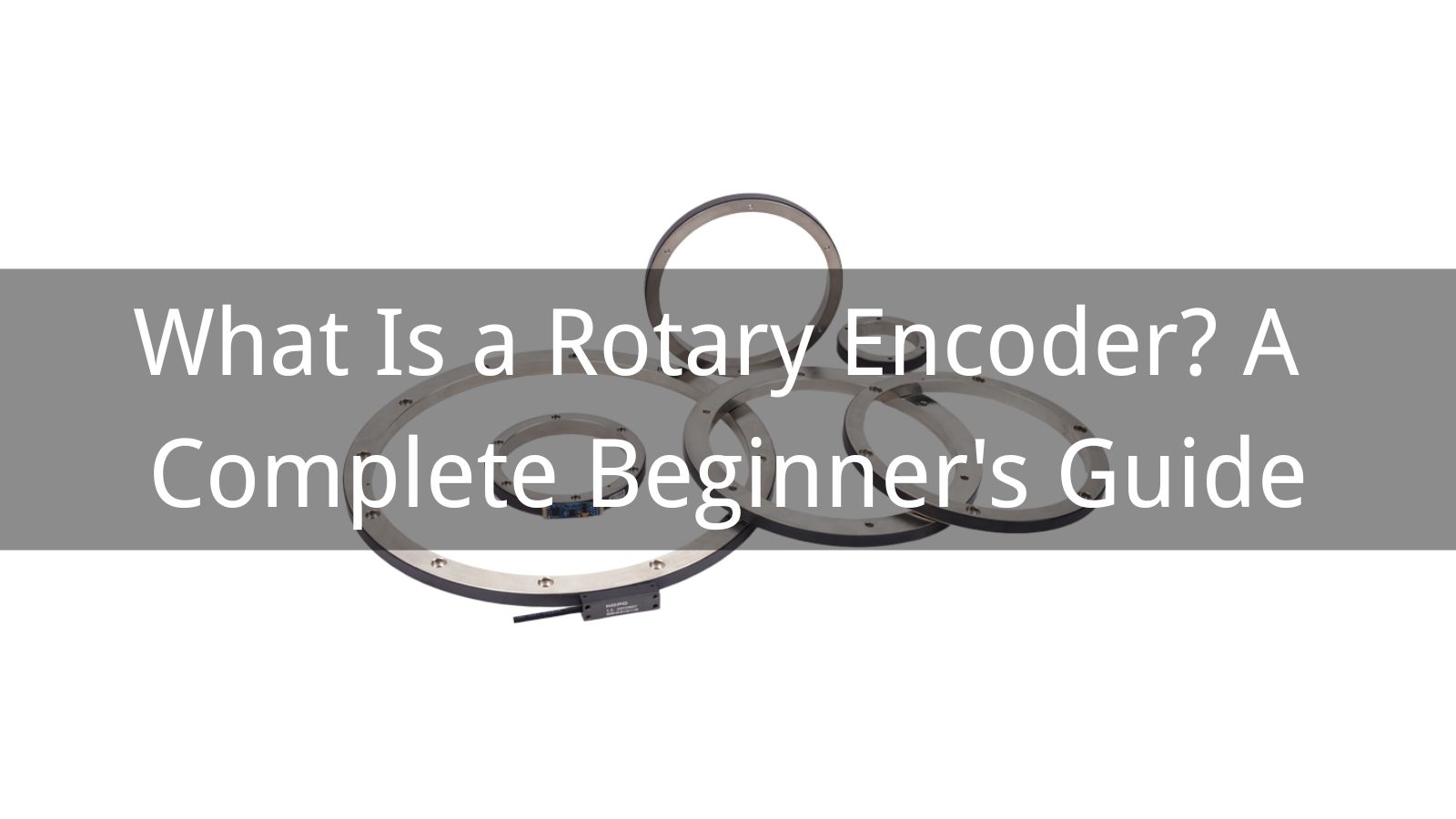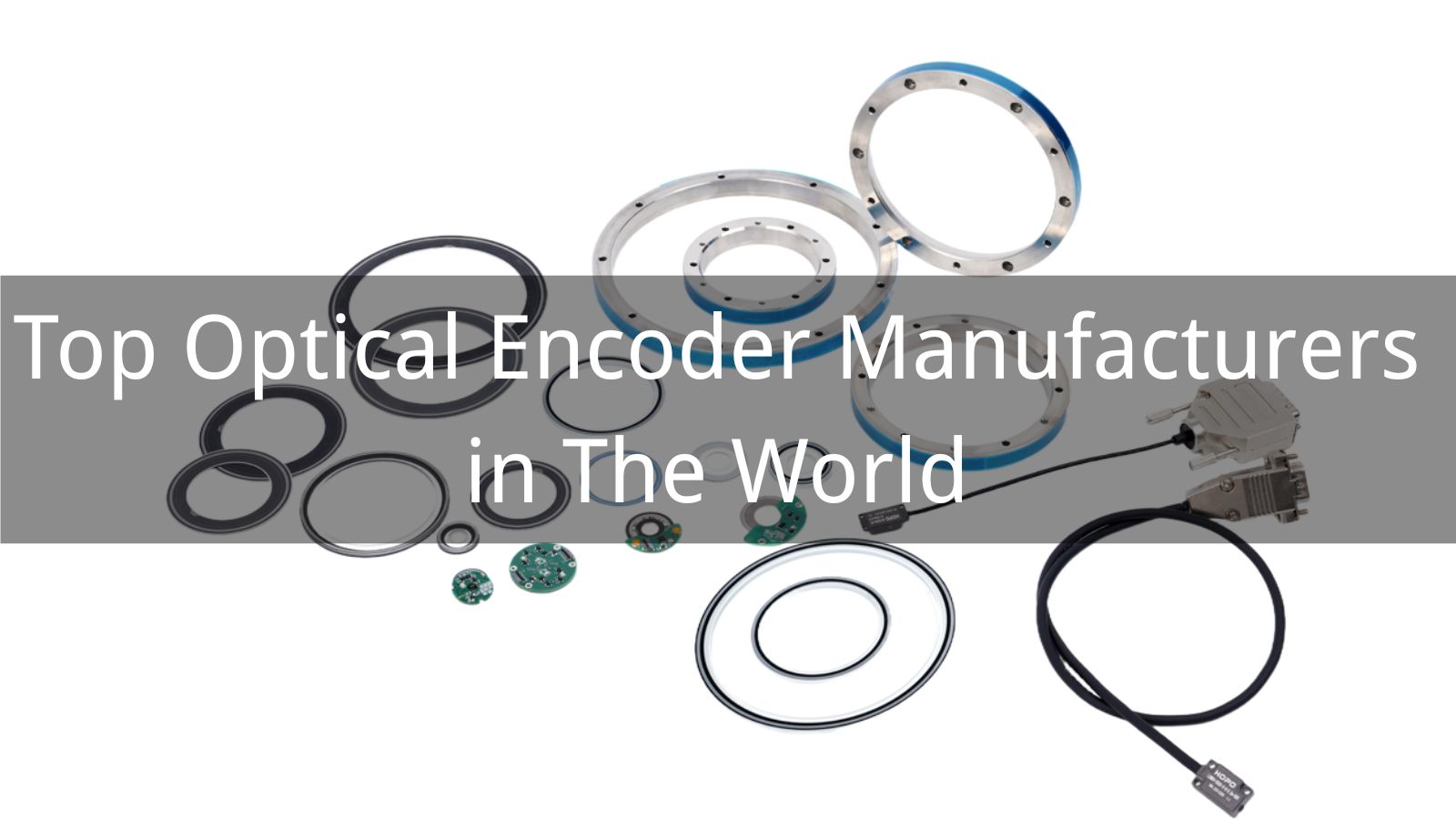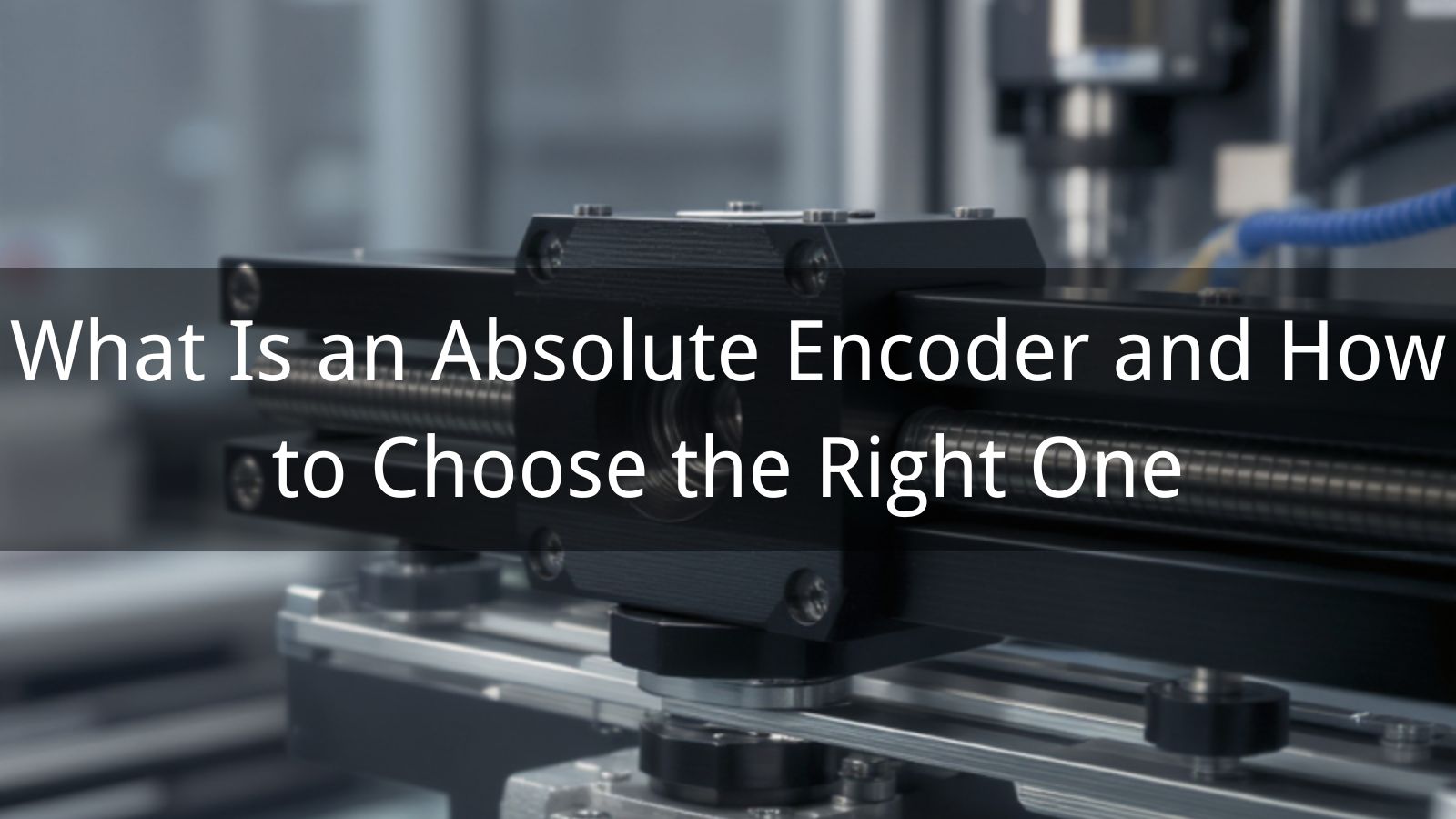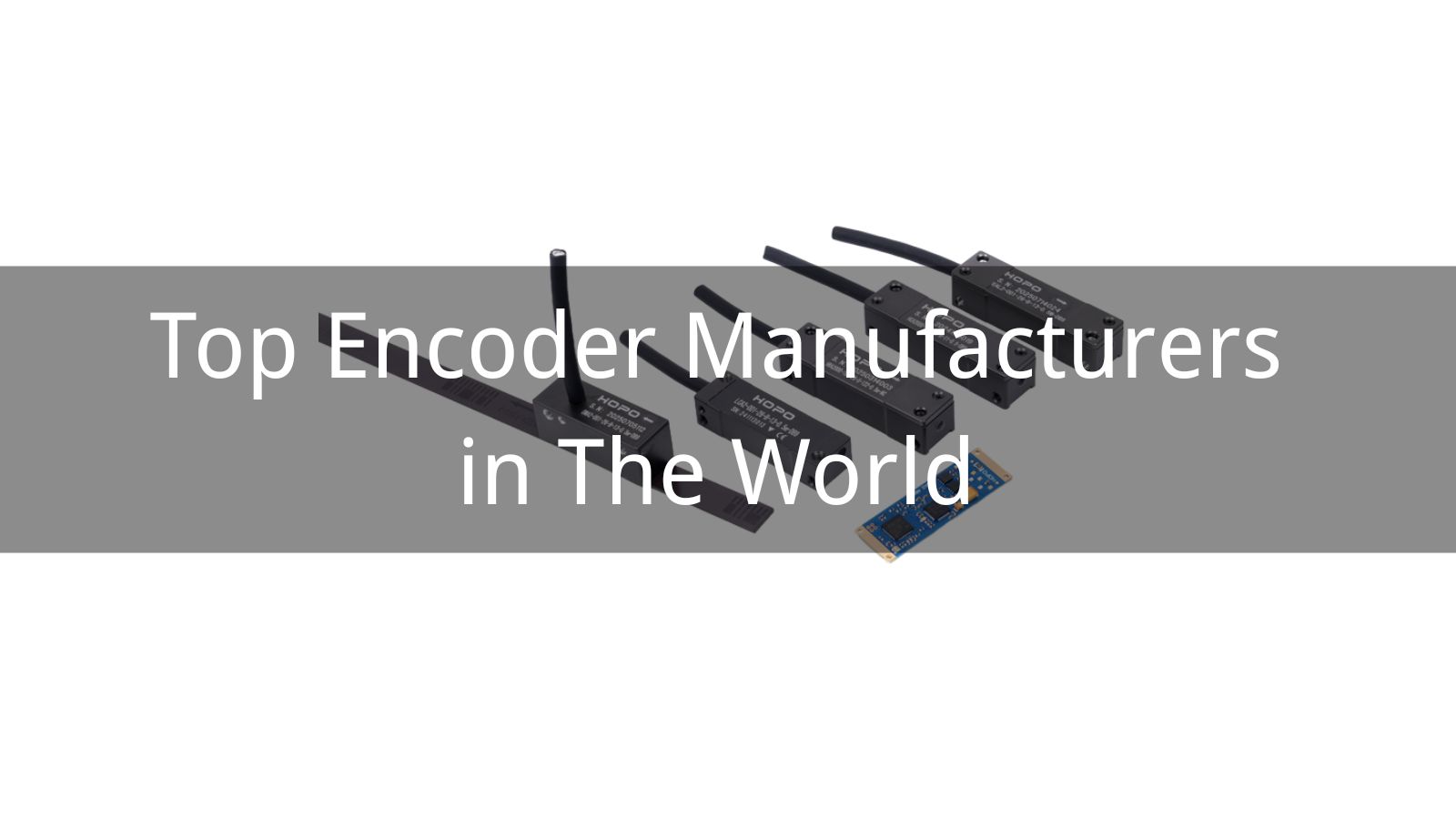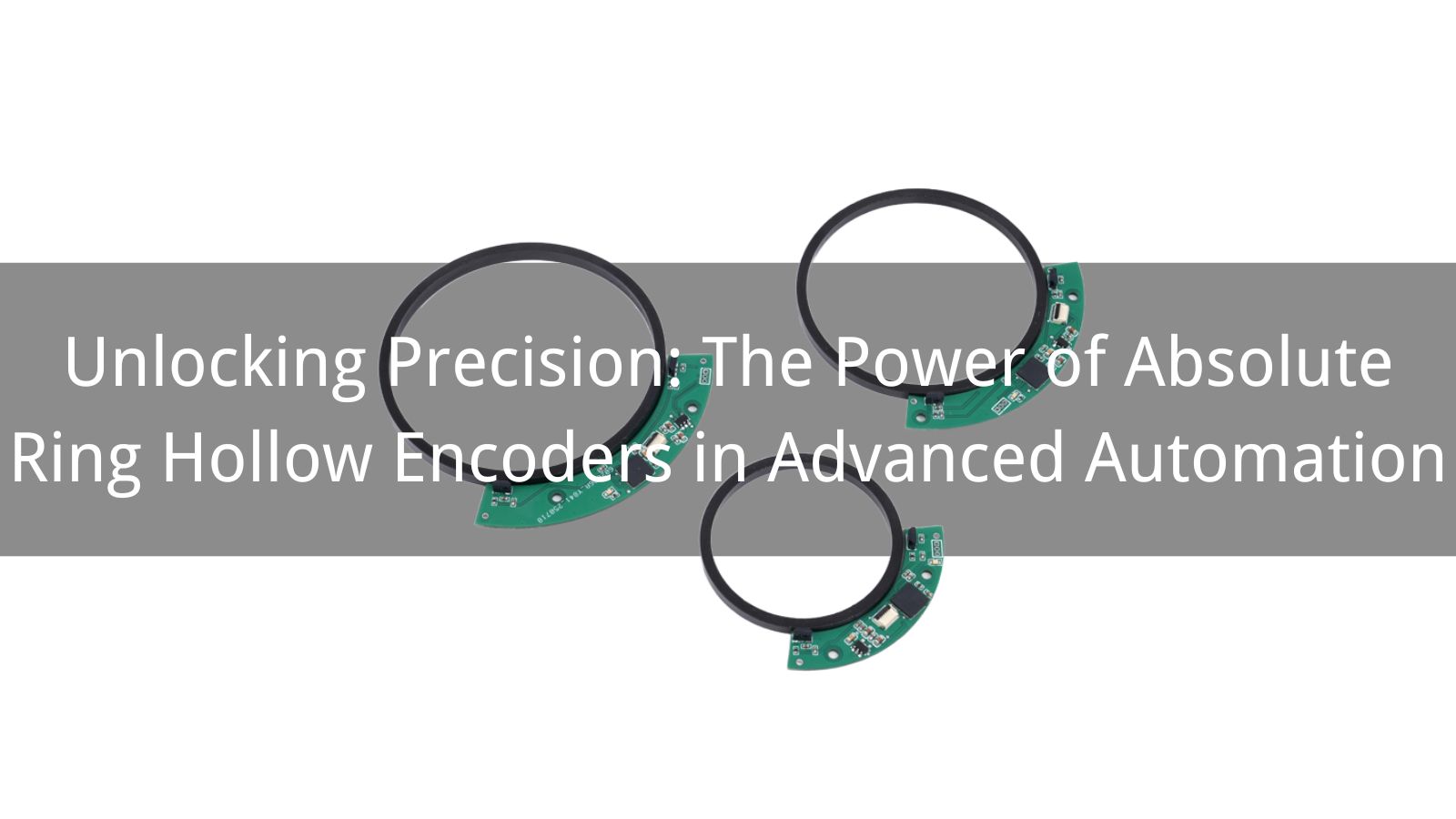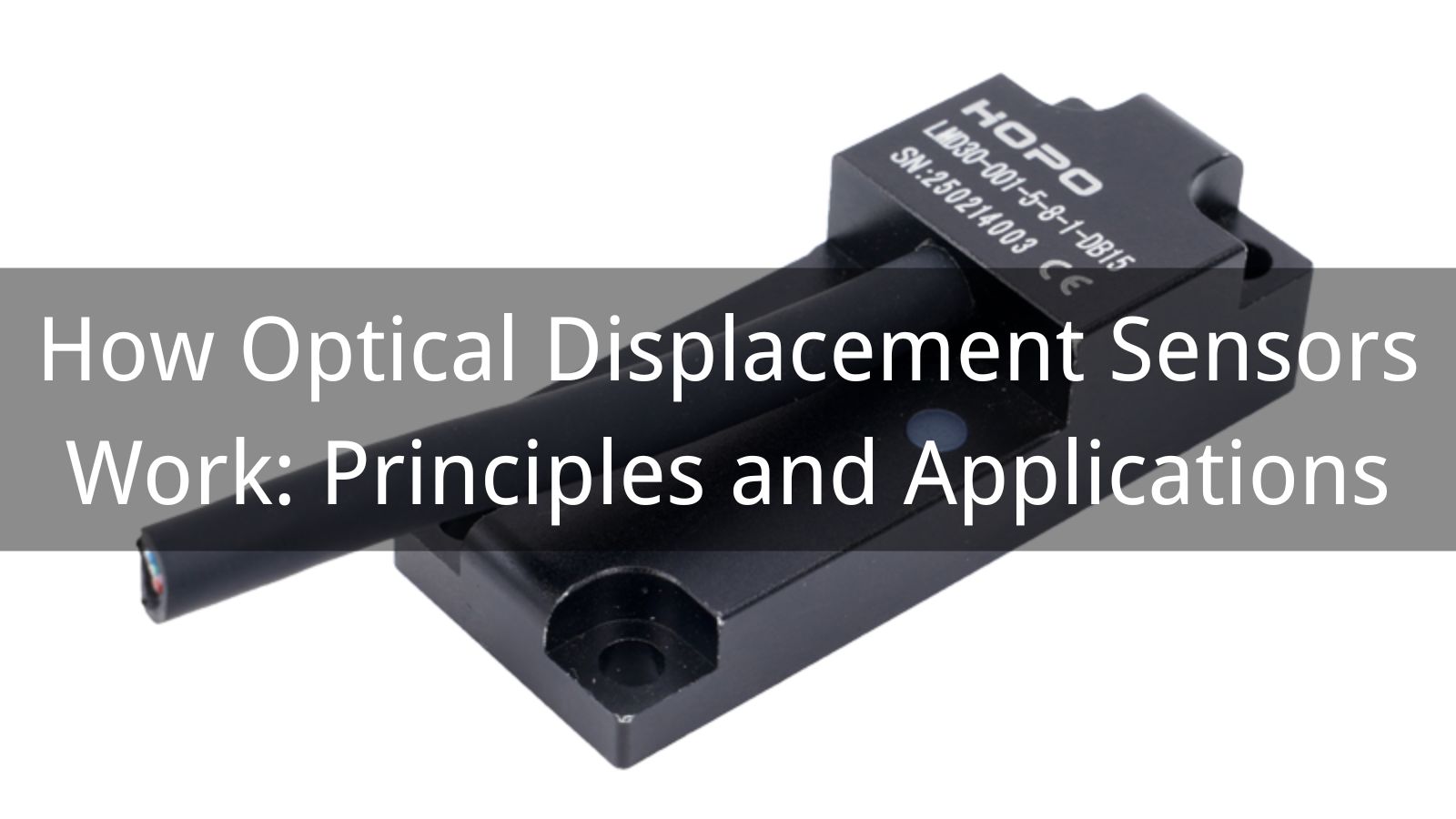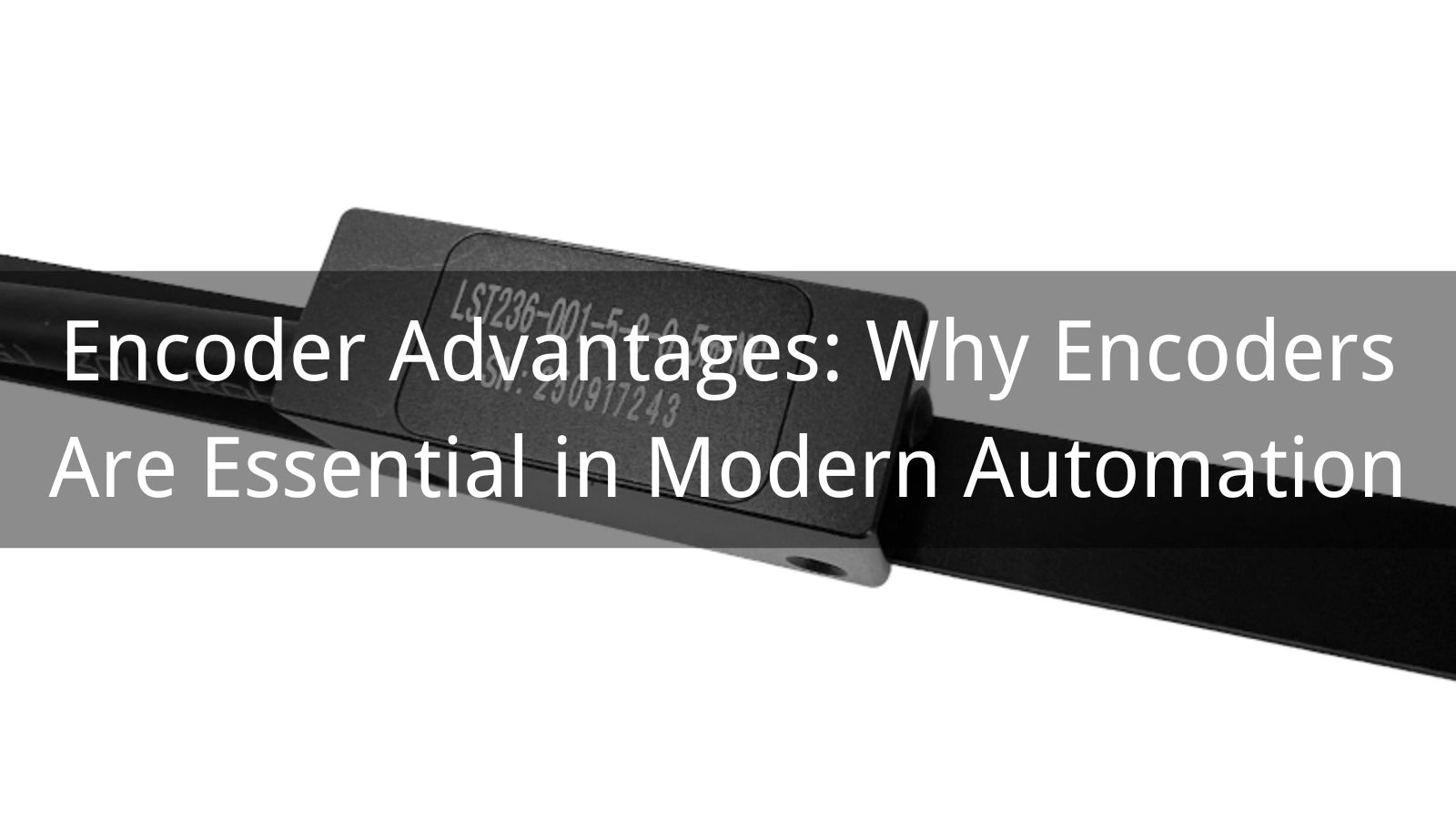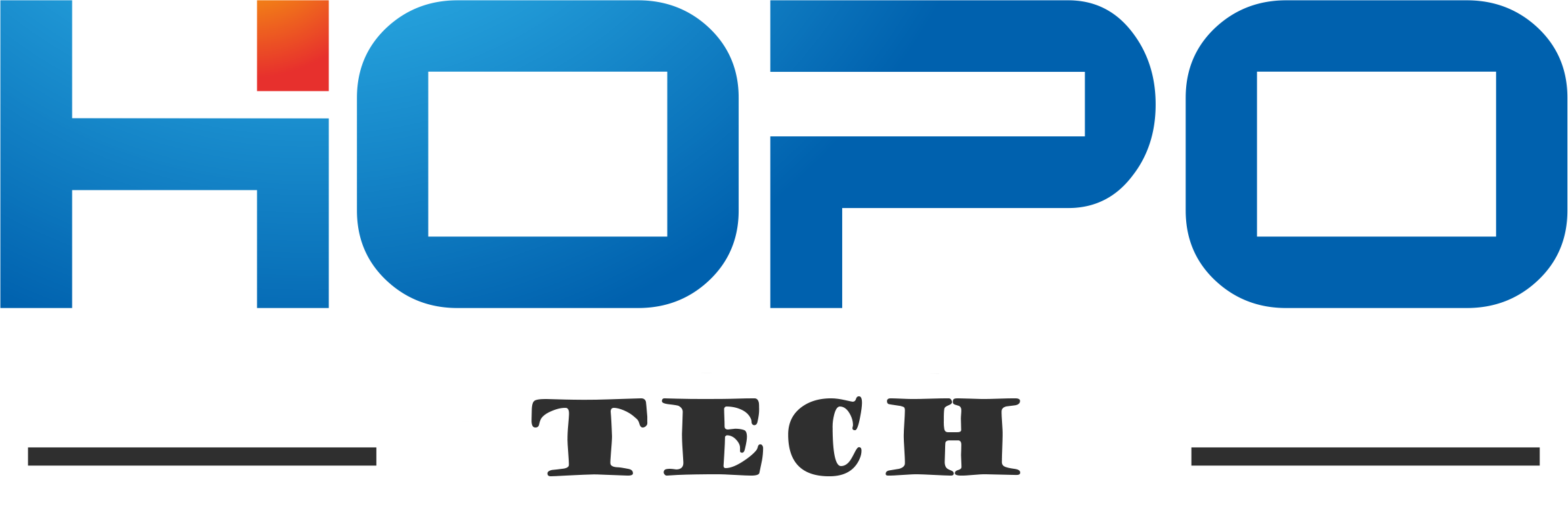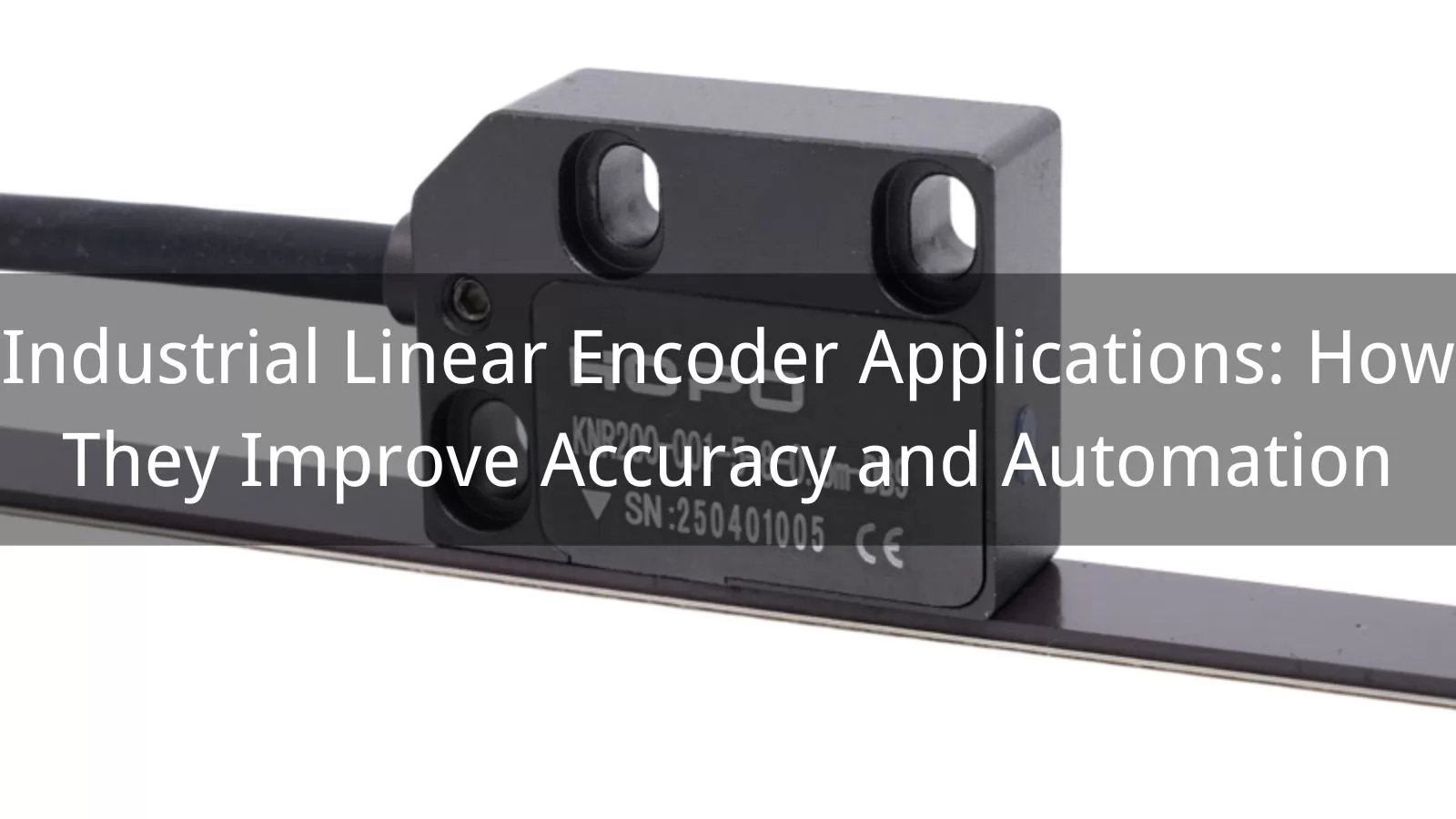
In modern manufacturing, where precision, speed, and automation determine competitiveness, industrial linear encoder applications play a critical role in ensuring accurate motion control and reliable position feedback. As factories transition toward smarter, more data-driven production environments, the need for precise linear measurement systems has never been greater. Linear encoders enable machines—from CNC tools and robotic arms to semiconductor equipment and automated assembly lines—to maintain tight tolerances, reduce errors, and operate with superior repeatability.
By delivering real-time feedback that guides every movement, these advanced sensing devices help manufacturers improve product quality, boost operational efficiency, and support the high-performance automation required in today's Industry 4.0 landscape. Whether enhancing machining accuracy or stabilizing robotic workflows, the growing range of industrial linear encoder applications highlights their indispensable value across the manufacturing sector.
An industrial linear encoder is a high-precision position feedback device used to measure linear motion and convert it into accurate digital or analog signals for control systems. In modern manufacturing and automation, linear encoders play a critical role in ensuring precise positioning, smooth motion control, and consistent repeatability across various machines. At its core, a linear encoder consists of two main components: a scale that contains encoded position data and a readhead that scans the scale to determine the exact position. Depending on the design, an industrial linear encoder can operate using optical, magnetic, inductive, or capacitive sensing technology.
The working principle of a linear encoder involves detecting the movement of the scale relative to the readhead and translating that motion into real-time position feedback. Optical linear encoders use light patterns to track displacement with extremely high resolution, making them ideal for CNC machines and semiconductor equipment. Magnetic linear encoders rely on magnetic fields and offer strong resistance to dust, oil, and vibration, which is essential for harsh industrial environments. Regardless of the sensing method, the encoder continuously sends precise signals to the motion controller, enabling closed-loop control, improved accuracy, and enhanced automation performance. This fundamental process is what makes industrial linear encoders indispensable in applications that demand exceptional precision and reliability.
Higher Accuracy and Repeatability in Precision Measurement
Industrial linear encoders provide exceptionally accurate position feedback, enabling machines to achieve consistent repeatability even in high-speed operations. By delivering real-time, high-resolution data, a linear encoder minimizes mechanical errors and ensures every motion follows the exact programmed path. This level of precision is essential for automated processes demanding tight tolerances, helping manufacturers improve quality and maintain stable production performance across CNC, robotics, and semiconductor applications.
Improved Efficiency Through Closed-Loop Motion Control
Using linear encoders in industrial automation transforms machines from open-loop to fully closed-loop systems, dramatically improving control accuracy and energy efficiency. The encoder continuously verifies the actual position and adjusts movements instantly, reducing overshoot, increasing throughput, and enabling smoother operation. This feedback-driven process allows automation equipment to run faster and more reliably, making linear encoders a critical component in high-performance production lines and advanced motion control systems.
Reduced Downtime and Lower Maintenance Costs
Because linear encoders detect motion errors early and provide precise diagnostic feedback, they help prevent breakdowns and minimize unplanned downtime. Their accurate position monitoring reduces mechanical wear by eliminating unnecessary movement corrections. For factories running 24/7 automation, this reliability leads to lower maintenance costs and longer machine life. By integrating linear encoder technology into industrial systems, companies can maintain stable productivity while avoiding expensive repairs and production interruptions.
Enhanced Product Quality and Consistency
Linear encoders ensure every process step meets the required specifications, which is essential for industries where product accuracy determines performance—such as electronics, medical devices, and precision machining. By improving motion accuracy and reducing variability, linear encoders allow automated equipment to deliver consistent quality across large production volumes. This consistency also supports quality certifications and reduces material waste, making linear encoders a key contributor to long-term operational excellence.
Industrial linear encoder applications span a wide range of manufacturing and automation environments where precise position measurement and stable motion control are essential. As factories continue to shift toward high-performance automation and digitalized production, linear encoders play an increasingly critical role in improving accuracy, enhancing efficiency, and ensuring consistent repeatability across various industrial processes.
One of the most important industrial linear encoder applications is in CNC machines and metalworking equipment, where accuracy directly impacts cutting quality, tool positioning, and part consistency. CNC linear encoder applications help eliminate mechanical backlash, compensate for thermal expansion, and provide real-time position feedback to the machine controller. This ensures tighter tolerances, smoother surface finishes, and improved dimensional stability—critical advantages in high-precision machining environments such as aerospace, automotive, and mold manufacturing.
In modern automation, robotic linear encoders are used to ensure accurate positioning of robotic arms, pick-and-place equipment, and automated assembly systems. The ability to capture real-time linear displacement allows robots to execute repetitive movements with maximum precision, supporting tasks that require micrometer-level accuracy. These encoder applications also contribute to safer robotic operation by improving motion reliability and preventing misalignment during high-speed repetitive cycles.
Semiconductor fabrication is one of the most demanding fields for precision measurement. Industrial linear encoder applications in semiconductor equipment—such as wafer handling systems, inspection modules, and micro-assembly platforms—require exceptionally high resolution and virtually zero error. Optical linear encoder applications are particularly suitable in this sector due to their ability to deliver nanometer-level accuracy, ensuring high yield rates and stable production performance in cleanroom environments.
Linear encoders also play a vital role in medical imaging systems, diagnostic equipment, and laboratory automation platforms where precise motion control ensures patient safety and data accuracy. They enable controlled table movement in MRI and CT systems, guide surgical robotics with high precision, and regulate microfluidic or dosing equipment used in analytical laboratories. The reliability of linear encoder feedback helps medical devices perform delicate measurements and procedures with greater consistency.
In industries where alignment, registration, and continuous motion accuracy are essential, such as printing, packaging, and textile machinery, industrial linear encoder applications provide the positional feedback required for high-speed production. Optical linear encoder applications help synchronize print heads, maintain registration accuracy, control cutting and slitting operations, and support precise tension control in textile processing. This level of control increases output quality and minimizes waste.
As Industry 4.0 adoption accelerates, linear encoders are increasingly integrated into smart manufacturing platforms, providing real-time position data to IoT systems and digital twins. With continuous monitoring and feedback, encoders help optimize machine performance, support predictive maintenance, and enhance overall equipment efficiency (OEE). These advanced applications show how industrial linear encoder systems form the backbone of intelligent automation and data-driven production.

Choosing between optical and magnetic linear encoders is essential for optimizing accuracy, reliability, and overall automation performance. Optical linear encoders are known for their exceptionally high resolution and superior measurement accuracy, making them the ideal choice for applications that demand ultra-precise feedback. Because optical systems read fine-graduated scales using LED or laser-based sensors, they excel in clean, controlled environments such as CNC machining centers, high-precision semiconductor manufacturing equipment, coordinate measuring machines (CMMs), and advanced robotic positioning systems. These applications require tight motion control tolerances, and optical linear encoder applications consistently deliver industry-leading repeatability and stability.
In contrast, magnetic linear encoders are engineered for durability and environmental resistance, offering reliable performance in conditions where optical systems may fail. They use magnetic fields to detect position changes, which allows them to operate effectively in harsh industrial settings exposed to dust, oil, moisture, vibrations, or temperature fluctuations. As a result, magnetic linear encoder applications are widely found in packaging machinery, textile equipment, automated material handling systems, and heavy-duty industrial automation lines. Their rugged design makes them especially suitable for long-stroke measurement tasks and outdoor applications where contamination is unavoidable.
When selecting the best encoder type, engineers should consider accuracy requirements, operating conditions, maintenance needs, and budget constraints. Optical encoders provide unmatched precision for high-resolution industrial automation, while magnetic encoders deliver consistent performance in demanding environments. Understanding the strengths of each linear encoder type ensures optimal performance, longer equipment life, and improved productivity across a wide range of industrial applications.
Choosing the right industrial linear encoder is essential for achieving high-precision motion control, stable feedback performance, and long-term reliability in demanding automation environments. When evaluating linear encoder selection criteria, begin by defining the accuracy and resolution required for your specific industrial linear encoder applications. High-precision CNC machines, semiconductor tools, and robotic positioning systems typically demand sub-micron accuracy, while packaging or textile machinery may require lower resolution but stronger environmental resistance. Beyond accuracy, consider the measuring length and travel range to ensure the linear encoder can support full machine stroke without compromising signal quality.
Environmental conditions play a major role in encoder selection. Optical encoders deliver superior precision but may be sensitive to dust, oil, moisture, or vibration, making magnetic or inductive linear encoders better suited for harsh industrial automation settings. Evaluate whether your application requires absolute or incremental output signals, as absolute encoders provide exact position even after power loss, while incremental encoders are ideal for high-speed, real-time feedback systems. Compatibility with your controller is another key factor—ensure the encoder supports interface protocols such as TTL, RS422, SSI, or BiSS-C for seamless integration with existing drive systems.
Mechanical constraints should also guide your decision. Consider installation space, mounting tolerances, and cable routing needs to avoid alignment errors and signal interference. For applications requiring long-term stability, choose a linear encoder with robust shielding, advanced sealing, and low maintenance requirements. By carefully matching encoder accuracy, resolution, durability, and signal type to your specific automation environment, you can select the right industrial linear encoder that maximizes system precision, boosts production efficiency, and delivers reliable performance for years to come.
Real-world linear encoder applications demonstrate how precision feedback dramatically improves manufacturing performance across multiple industries. In advanced CNC machining, a high-resolution industrial linear encoder enabled a tooling factory to reduce positioning errors by 35%, resulting in smoother surface finishes and fewer rejected parts. In robotics automation, integrating magnetic linear encoders into pick-and-place systems increased placement accuracy to within ±2 microns, significantly improving assembly speed and throughput.
Semiconductor manufacturers also report major efficiency gains: one wafer-processing line upgraded to optical linear encoders and achieved a 20% boost in yield due to tighter motion control during micro-cutting and inspection. Even medical device companies benefit from precise linear encoder feedback, using it to stabilize motion in surgical robots and imaging tables, ensuring ultra-consistent performance. These case studies collectively highlight how effective industrial linear encoder applications can enhance accuracy, reduce downtime, and deliver measurable improvements in automation output.

Even the most advanced industrial linear encoder applications can encounter performance issues if the system is not properly installed, maintained, or protected from environmental interference. Understanding these common problems—and how to fix them—ensures reliable linear encoder accuracy, stable feedback signals, and long-term automation efficiency.
One of the most frequent challenges is contamination from dust, oil, or metal particles, especially in CNC machining or printing environments. Contamination can obstruct the reading head and cause unstable linear encoder signals. The solution is to select a sealed housing, use protective covers, or switch to magnetic linear encoder systems when working in harsh industrial conditions.
Another common problem is electrical noise and signal interference, which leads to inconsistent position feedback. This issue typically occurs when the encoder cables run too close to high-power lines or unshielded motors. Using shielded cables, proper grounding, and differential outputs such as RS422 or BiSS-C can significantly improve signal integrity and eliminate noise-related errors.
Mounting misalignment is also a major cause of inaccurate measurements. If the scale and readhead are not parallel, the encoder may lose counts or generate drift over long travel distances. To solve this, manufacturers recommend precision alignment tools, gradual tightening of mounting screws, and verifying parallelism across the full measuring length.
In some industrial automation applications, users also experience thermal expansion, which affects scale stability and measurement repeatability. The solution is to choose linear encoders with thermal compensation features or install the scale using floating mounts that allow for controlled expansion without distorting the measurements.
Finally, lack of routine maintenance can lead to calibration issues over time. Regular inspection of the reading head, cleaning the scale, and verifying zero-point accuracy help ensure continuous high performance in demanding linear encoder applications.
By understanding these common problems and applying the correct solutions, manufacturers can dramatically improve linear encoder reliability and maintain consistent accuracy across CNC machines, robotics systems, and other high-precision automation equipment.
Industrial linear encoder applications continue to shape the future of precision manufacturing, advanced robotics, and smart factory automation. By delivering real-time position feedback, higher accuracy, and stable long-term performance, high-quality linear encoders enable businesses to reduce errors, boost productivity, and maintain consistent output across demanding industrial environments. Whether your operation involves CNC machining, semiconductor processing, automated assembly, or medical equipment, upgrading to a high-performance linear encoder system is one of the most effective ways to enhance overall automation efficiency and motion control accuracy.
If you are ready to improve precision, strengthen quality control, and future-proof your machinery, now is the time to integrate advanced linear encoders into your equipment. Contact our engineering team today to explore the best linear encoder solutions for your application, request technical recommendations, or obtain a customized quotation tailored to your automation needs. Let us help you upgrade your industrial motion systems with reliable, high-performance linear encoders that deliver measurable results.
